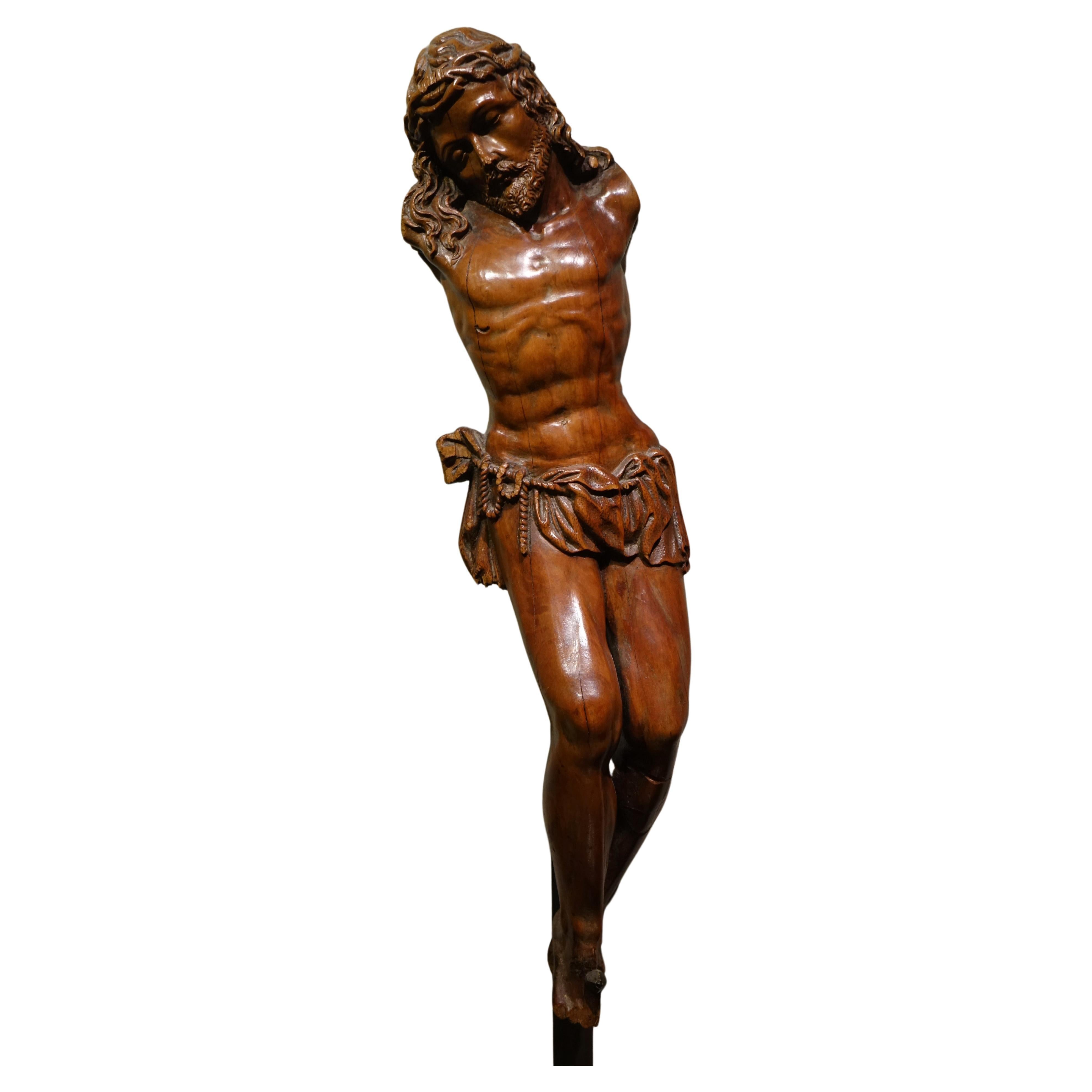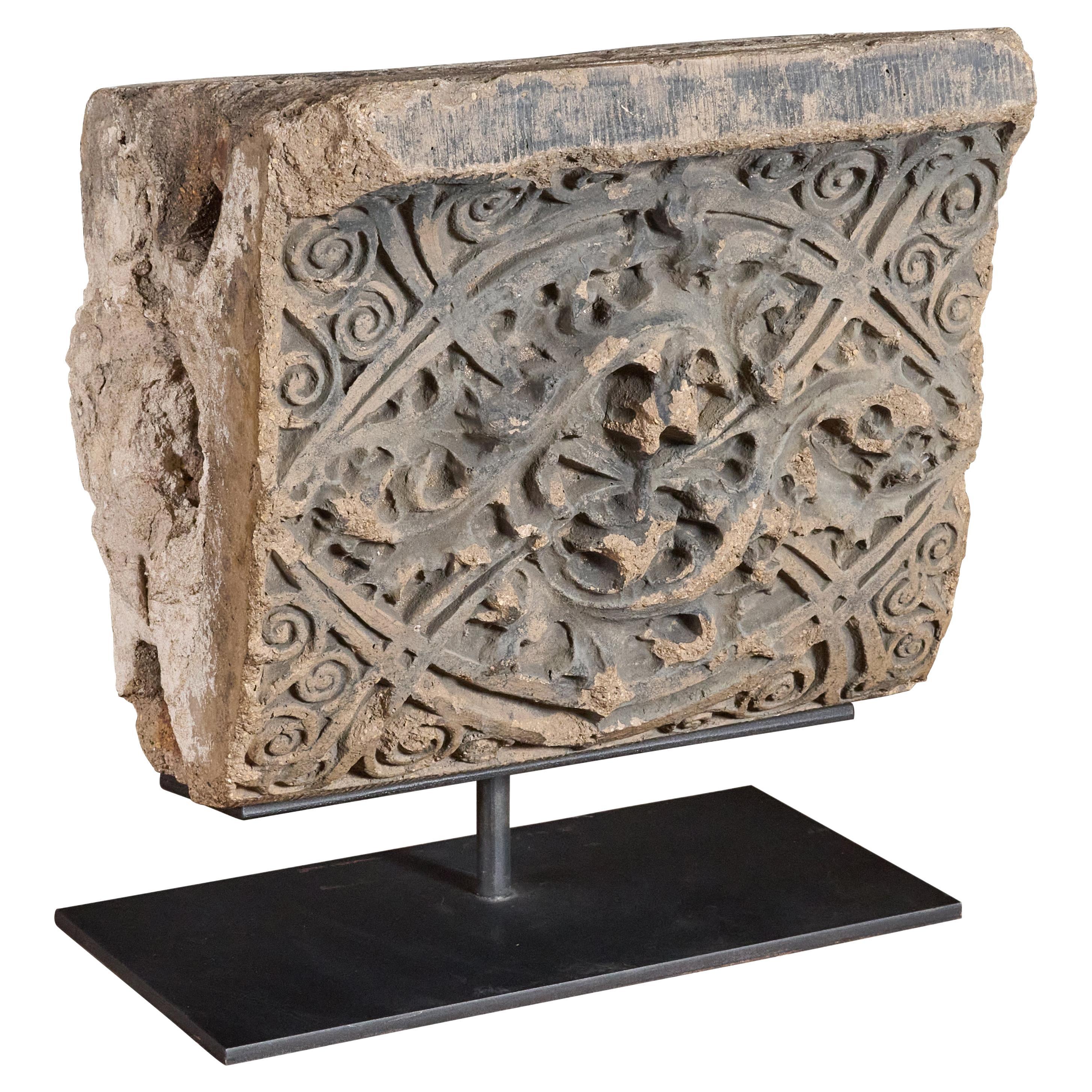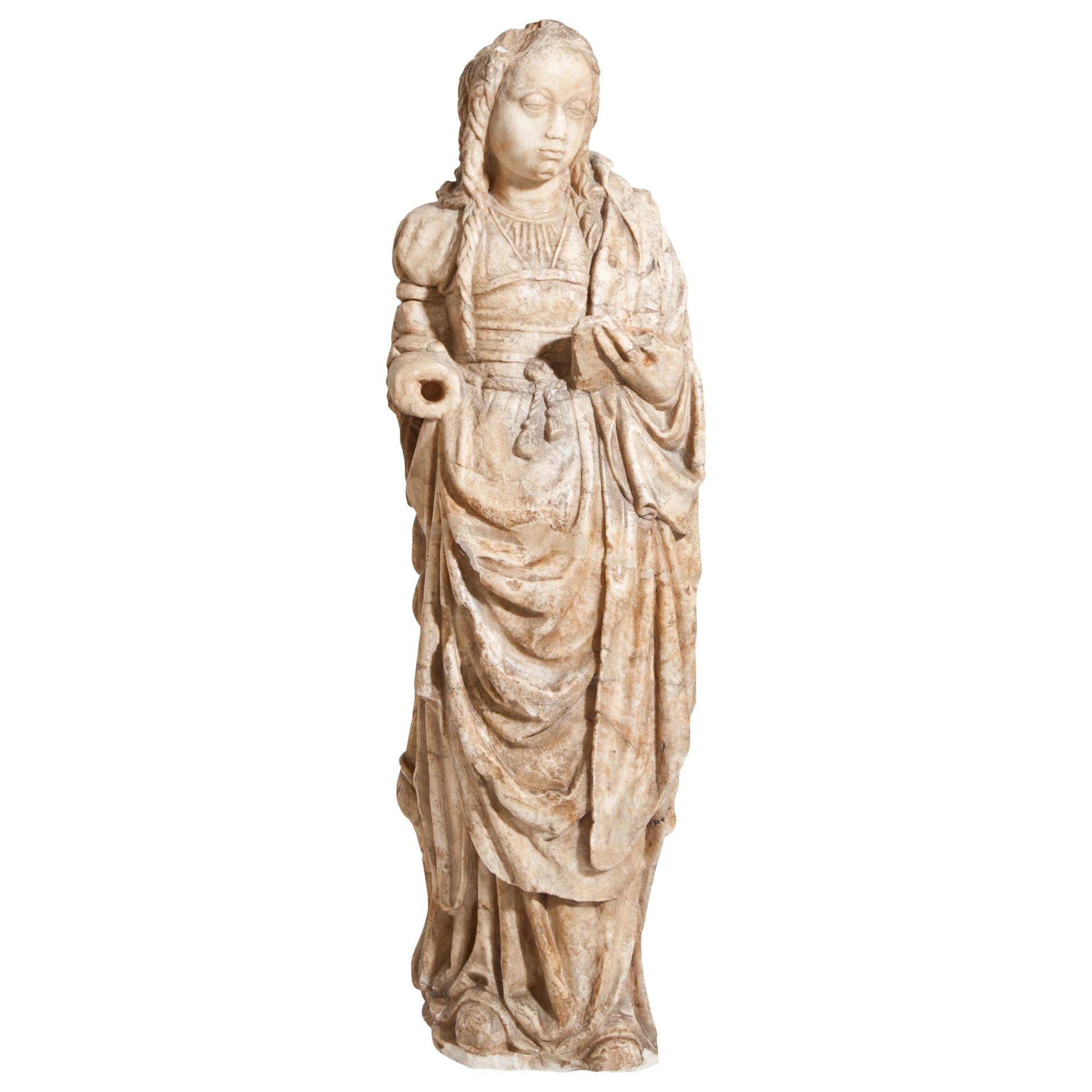Items Similar to French Late 16th Century Grand Scale Trunk Facade
Want more images or videos?
Request additional images or videos from the seller
1 of 14
French Late 16th Century Grand Scale Trunk Facade
About the Item
A stunning, early 17th century trunk facade of grand scale. Dated 1621. Soundly constructed from richly stained oak with beautiful carvings of grapes on the vine, birds and other decorative motifs. A wonderful architectural element to be built in or used a headboard.
- Dimensions:Height: 48.75 in (123.83 cm)Width: 79.5 in (201.93 cm)Depth: 1.88 in (4.78 cm)
- Materials and Techniques:
- Place of Origin:
- Period:Early 17th Century
- Date of Manufacture:1621
- Condition:Repaired: We have treated this piece in our own warehouse outside of Nice, France. Some patching of holes/small missing bits was also done. Wear consistent with age and use.
- Seller Location:Atlanta, GA
- Reference Number:
About the Seller
5.0
Vetted Seller
These experienced sellers undergo a comprehensive evaluation by our team of in-house experts.
Established in 2008
1stDibs seller since 2012
593 sales on 1stDibs
Typical response time: <1 hour
- ShippingRetrieving quote...Ships From: Atlanta, GA
- Return PolicyThis item cannot be returned.
More From This SellerView All
- Pair of Late 16th-Early 17th Century Pinnacle FragmentsLocated in Atlanta, GAA very handsome pair of late 16th-early 17th century Pinnacle fragments in polychromed wood. Wonderful architectural elements as they are or perfectly suited to convert into lamps. T...Category
Antique 17th Century Spanish Architectural Elements
MaterialsWood
- Italian 16th Century Marble FragmentLocated in Atlanta, GAA very stunning 16th century Marble Fragment from the Veneto region of Italy. Beautifully carved with angels or putti and now mounted on its iron...Category
Antique 16th Century Italian Architectural Elements
MaterialsMarble
- Pair of 16th Century Stone CapitalsLocated in Atlanta, GAA sensational pair of 16th century Capitales Sevillanos, fabricated in Italy of Carrara marble and then brought to Seville, Spain. Wonderful architectural elements to incorporate int...Category
Antique 16th Century Spanish Architectural Elements
MaterialsCarrara Marble
- Spanish Later 19th Century Flame FinialLocated in Atlanta, GAA stunning later 19th century architectural sculpture of flame finial exquisitely cast in bronze. The sculpture is now presented on its custom made iron base.Category
Antique 19th Century Spanish Architectural Elements
MaterialsBronze
- French 16th Century Coffre, TrunkLocated in Atlanta, GAA stunning early 16th century Coffre - Trunk from the Bourgogne region of France. Beautifully constructed from very handsome walnut with lovely linen fold detailing, a beautiful lock...Category
Antique 16th Century French Trunks and Luggage
MaterialsWalnut
- French 16th Century Angel Stone FragmentLocated in Atlanta, GAA wonderful early 16th century hand carved stoned fragment of an angel. Beautifully crafted from Tuffeau stone from the Chambord area of France - now on its iron stand. A wonderful a...Category
Antique 16th Century French Figurative Sculptures
MaterialsStone
You May Also Like
- Spanish 16th Century High Relief Limestone Bust from a BuildingLocated in Marbella, ES16th century high relief limestone bust that topped a stone arch. Side heraldic decorations indicate a patron Saint. The face is weathered but the general condition is good.Category
Antique 16th Century Spanish Renaissance Architectural Elements
MaterialsLimestone
- Christ in Boxwood, France, late 16th-early 17th century".Located in PARIS, FRChrist in Boxwood, France, late 16th-early 17th century Beautiful corpse of Christ with missing arms. He must have been on the Cross, arms in a horizontal position. Great expressiv...Category
Antique Early 17th Century French Renaissance Figurative Sculptures
MaterialsBoxwood
- Louis Sullivan Chicago Stock Exchange Facade FragmentLocated in Chicago, ILTerra cotta facade fragment from Chicago Stock Exchange. Architect Louis Sullivan. On custom mount.Category
Antique 1890s American Architectural Elements
MaterialsIron
- Alabaster Madonna, Northern France, 16th CenturyLocated in Greding, DEFully plastic representation of the Madonna in alabaster with finely carved detailing of the drapery of the robe and the hair. Partially damaged and traces of old restoration. Prove...Category
Antique 16th Century French Figurative Sculptures
MaterialsAlabaster
- Italian Ancient Marble Sculpture Fountain, Late 16th CenturyLocated in Milano, ITSea monster Carrara marble mouth fountain Italy, late 16th century It measures 13.8 x 31.5 x 18.9 in (35 x 80 x 48 cm) State of conservation: some small evident gaps and widespread signs of wear due to outdoor exposure. The gray marks crossing it do not come from restoration, but are rather the natural veins of the marble. This work has some morphological characteristics typically associated with the iconography of the sea monster: an elongated muzzle, sharp teeth, protruding eyes, elongated ears, and a coiled serpent's tail. An in-depth series of studies on artistic depictions of the sea monster attempted to verify how this symbol evolved in antiquity in the European and Mediterranean contexts and how it gradually changed its image and function over time. The iconography itself is mutable and imaginative and its history is rich with cultural and artistic exchange, as well as the overlapping of ideas. This occurred so much that it is difficult to accurately pinpoint the "types" that satisfactorily represent its various developments. However, we can try to summarize the main figures, starting from the biblical Leviathan and the marine creature that swallowed Jonah (in the Christian version, this figure was to become a whale or a "big fish", the “ketos mega”, translation of the Hebrew “dag gadol”). Other specimens ranged from the dragons mentioned in the Iliad (which were winged and had legs) to "ketos” (also from Greek mythology), the terrifying being from whose Latinized name (“cetus”) derives the word "cetacean". See J. Boardman, “Very Like a Whale” - Classical Sea Monsters, in Monsters and Demons in the Ancient and Medieval Worlds, in Papers presented in Honor of Edith Porada, Mainz am Rhein 1987, pp. 73-84). In Italy the monster underwent yet further variations: it can be found in Etruscan art on the front of some sarcophagi representing the companion of souls, while among the Romans we find the “Pistrice” (cited by Plinio in Naturalis Historia PLIN., Nat., II 9, 8 and by Virgilio in Eneide: VERG., Aen., III, 427), which appeared in the shape of a stylized hippocampus or a very large monstrous cetacean and evolved into a hideous being with a dragon's head and long webbed fins. During the Middle Ages, the sea monster was the object of new transformations: at this time, it is often winged, the head is stretched like a crocodile, the front legs are often very sharp fins - sometimes real paws - until the image merges with dragons, the typical figures of medieval visionary spirituality widely found throughout Europe (on this topic and much more, see: Baltrušaitis, J., Il Medioevo fantastico. Antichità ed esotismi nell’arte gotica, Gli Adelphi 1997). In Italy during the 15th and 16th centuries, the revival of classicism - representative of the humanistic and Renaissance periods - led to a different reading of these "creatures". Indeed, the sea monster was also to find widespread use as an isolated decorative motif, especially in numerous fountains and sculptures where dolphins or sea monsters were used as a characterizing element linked to water (on this theme see: Chet Van Duzer, Sea Monsters on Medieval and Renaissance Maps, London, The British library, 2013). From the morphological point of view, the "sea monsters" of this period are mostly depicted as hybrid figures, in which the body of a mythological or real being (a hippocampus, a sea snake, a dolphin), is joined to a head with a rather indistinct appearance. It was usually characterized by large upright ears, an elongated snout, sharp teeth and globular, protruding eyes; a complex and indefinite figure, both from the symbolic point of view and from that of its genesis. The work we are examining is placed as a cross between the medieval sea serpent and the Renaissance dolphin, with stylistic features which recall the snake as often used in heraldry (such as the "snake" depicted in the coat of arms of the Visconti - the lords and then dukes of Milan between 1277 and 1447 - and which, for some, may be derived from the representations of the “Pistrice” that swallowed Jonah). In the search for sources, Renaissance cartography and in particular woodcuts should not be neglected. See for example the monsters of Olaus Magnus, from the editions of the “Historia de gentibus septentrionalibus” (“History of the peoples of the north”) and the natural histories of Conrad Gesner, Ulisse...Category
Antique 16th Century Italian Renaissance Animal Sculptures
MaterialsCarrara Marble
- Massacre of the Innocents, Normandy, Late 16th CenturyLocated in Bruxelles, BEThe Massacre of the Innocents Carved oak panel Normandy, late 16th century (Collection labels on the back) Measures: 43,5 x 61 cm.Category
Antique 16th Century French Renaissance Wall-mounted Sculptures
MaterialsOak
Recently Viewed
View AllMore Ways To Browse
The Vine
French Scales
Architectural Scale
Grand Scale
16th Century And Earlier
Scale From France
16th France
French 16th
Trunk France
16th Century French
16th French Furniture
16th Century French Furniture
Antique French Trunk
French Headboards
Beautiful Antique Trunk
Grape Vine French
Dated 17th Century Furniture
Antique Brown Headboard





